How To Use a Smoker and Solve Common Meat Smoker Problems
Don't know how to use a smoker? When you buy a used meat smoker at a garage sale, the instruction manual is usually missing. And even if it's not, many smoker manuals contain at best, sketchy instructions.
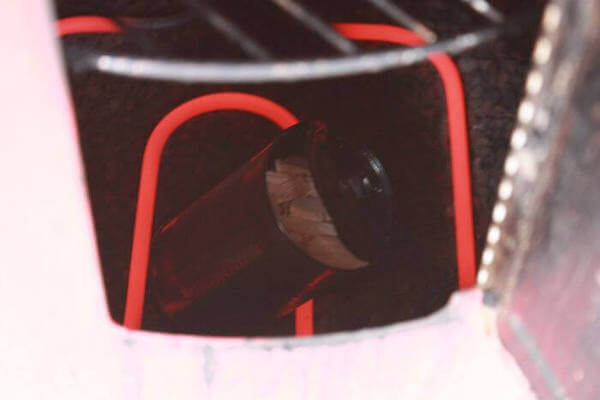
So to fill in the missing information, this page provides the basic
nuts-and-bolts information for using the two most common types of water
smokers - vertical charcoal smokers and vertical electric smokers.
How To Use an Electric Water Smoker
Vertical electric smokers, also known as electric water smokers, are simple and straightforward. The electric element lies in the base of the smoker, usually on a bed of lava rock.
The center section, which comprises most of the smoke chamber, sits on the base. The lid fits on top of the center section.
With the less expensive models, there's typically no temperature control. I have a Brinkmann Gourmet electric smoker, and found that when the weather is pleasant, the smoke chamber temperature runs in the 210-240 degree range. The smoker temperature can be adversely affected by wind and the ambient outdoor temperature.
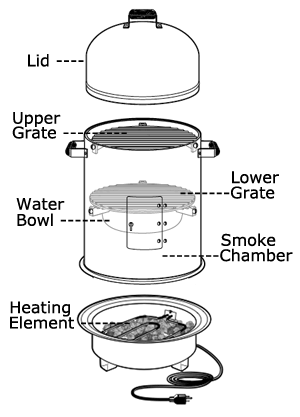
Step by step instructions for using a vertical electric smoker.
-
Place the smoker outdoors on a non-flammable surface, away from flammable objects (buildings, etc)
-
Fill the water pan 2/3 to 3/4 full of hot water. Using hot water helps the smoker come up to the desired temperature more quickly.
-
Plug in the smoker cord, directly into an electrical outlet. If you must use an extension cord, use as short an extension as possible of adequate capacity - at minimum 12 gauge, 10 gauge preferred.
-
Monitor the temperature gauge on the lid. 220-240 degrees is the ideal range for ribs and brisket. Chicken and turkey can be smoked at that temperature range too, but are best smoked in the 275-300 degree range. With some of the electric smokers, it's impossible to reach those higher temperatures.
-
Prepare the smoker wood by wrapping chunks or chips in heavy duty aluminum foil. Make packets that will fit between the loops of the heating element without touching. Laying the foil packets directly on the element can create hot spots, causing premature failure of the element. Form the packets into a long, narrow shape for best fit.
-
Position one or two smoker wood packets in the smoker. When those have finished smoking, add one more. Continue adding new packets until approximately half the total smoking time has passed. For instance, a chicken, estimated to take three hours, needs about 1-1/2 hours of smoke for flavoring. This is only a guideline, and you may prefer to apply smoker longer, or for less time. Experience will tell what's right for you.
-
Wipe a light coat of oil on the food grates to prevent sticking. Place food on the racks. The upper rack is more convenient to use, plus foods cook just a bit quicker there than on the lower rack.
-
Use a good meat thermometer to check the internal temperature of the meat so you know when it's done cooking. Under cooked meats can be unsafe, and overcooking can render meats dry and lacking flavor.
- When done, remove meats to rest and unplug the smoker.
How To Use a Smoker - Vertical Charcoal Smokers
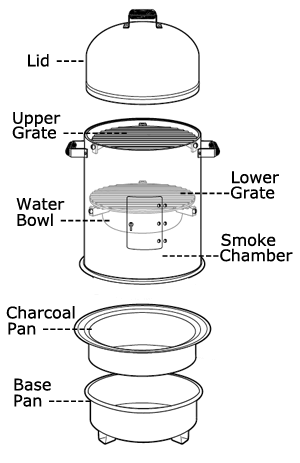
Using a charcoal water smoker is more involved, since you'll be working with burning charcoal briquettes, but much is the same as when using an electric smoker.
Less expensive vertical charcoal smokers have no lower vent adjustment for temperature control, so use less or more charcoal for lower or higher cooking temperatures. It's an imperfect system, but with careful attention, these smokers do a fair job.
My charcoal smoker of choice is the Weber Smoky Mountain Cooker. Even though more it's expensive, it's well made and provides precise temperature control. A single filling of charcoal can last for 10 or more hours.
Using charcoal water smokers:
-
Position Smoker Outdoors see #1 above.
-
Fill Water Pan see #2 above.
-
Light Charcoal - Use a charcoal chimney to start briquettes before pouring into the charcoal pan. General guideline - one chimney full for foods taking up to 4 hours, two chimneys full for foods taking longer.
-
Monitor Temperature see #4 above.
-
Prepare the Smoker Wood see #5 above. Foil packs are placed directly on top of the burning charcoal briquettes.
-
Place Smoker Wood in Smoker - see #6 above.
-
Oil Food Grates see #7 above.
-
Use a Food Thermometer see #8 above.
-
Remove Meats to Rest
Experiment with different types of smoker wood for different flavors. Hickory, apple, cherry and mesquite are easily found, but don't be afraid to try other woods.
Oak, both white and red are great for smoking beef. Pear is mild and well suited for poultry and fish. And even well cured black walnut (one of my favorites) has its place as a smoker wood.
Meat Smoker Problems, Solutions, and Common Questions
Some Electric Smokers Fail to Produce Smoke
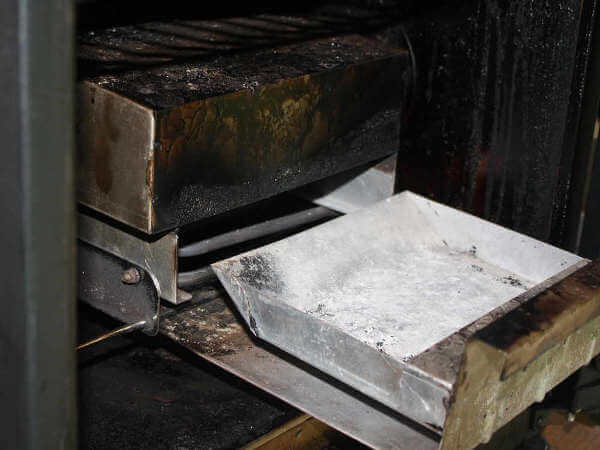
Low or no smoke production is one of the most common problems encountered when using electric smokers. The design of the smoker and the cooking temperature both have an impact on how well the wood chips smoke.
There have been reports of smoke Masterbuilt smokers producing no smoke, as well as some problems with Royal Oak smokers.
Common fixes for these problems include:
- Making adjustments to the position of the wood chip box, making it closer to the electric element.
- Using dry wood chips. Many believe that soaking wood chips in water will hinder smoke production.
- Lighting the wood chips with a small propane torch before placing the meat in the smoker.
- Operating the smoker at a higher temperature.
There have been other problems noted when using Masterbuilt smokers, one of them being occasional blasts of smoke puffing out from around the wood chip insertion tube.
General Tips on Using Certain Smokers
Using Little Chief and Big Chief Smokers
A common misunderstanding about the SmokeHouse line of Little Chief and Big Chief smokers is that they can be used to fully cook smoked meats.
With a maximum temperature of 170˚F - 180˚F, these smokers are perfect for smoking fish and making jerky, but because of the low smoker temperature it's not recommended that they be used for smoking meats like pork, beef or poultry.
Little Chief and Big Chief smokers can be used to add smoke flavor to meats, by using them to apply smoke for an hour or so. Afterwards the meat must be transferred to an oven or a grill to finish cooking.
Water Pans, Wood Chip Boxes and Pit Smoker Fires
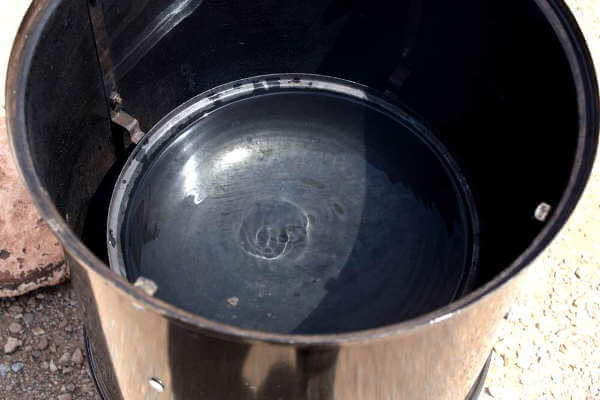
There is some confusion as to whether or not to fill the water pan with water when smoking some foods, and when smoking ribs. Usually it's best to use use water, or some other liquid, in smoker water pans in most cases, though there are times when it's better to smoke with a dry water pan.
If you use an electric smoker that has an exposed element that rests on a bed of lava rock, can you place a wood chip container directly on the element without causing damage?
Horizontal pit smokers are one of the few smoker types that use burning wood to provide both heat and smoke. To produce clean smoke that doesn't make the food bitter, maintaining the fire so that it burns correctly is a technique that must be learned.
How to Set Up Gas and Charcoal Grills So They Can Be Used To Smoke Foods
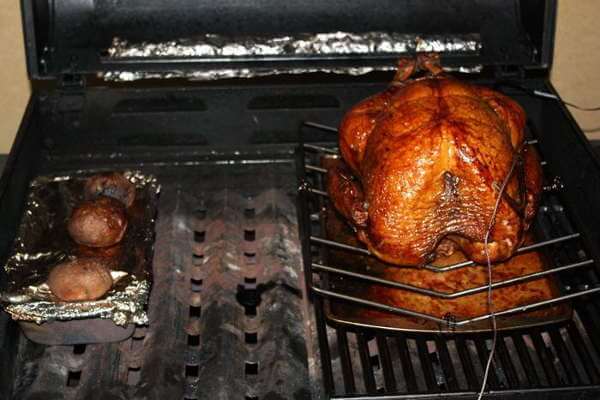
If you have no meat smoker, but you do have a grill, you'll still be able to smoke foods. Both gas grills and charcoal grills can be easily set up to add some appetizing, smoky flavor to meats, fish and poultry.
Maintaining Your Smoker
Smokers get kind of grungy inside after several uses. Does a smoker have to be cleaned after every use or does the layer of smoke residue inside the smoker improve the flavor of smoked food?
The smoker grates should be cleaned regularly. Is there a correct procedure that must be followed to safely clean porcelain-coated cooking grates?
Rigging Up a Home Made Smoker
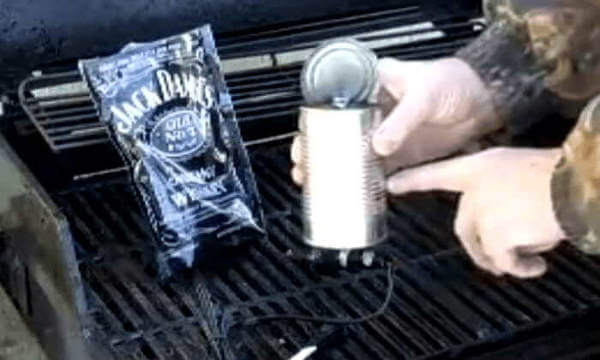
If you've ever considered building your own smoker, there are some general rules to know, like the correct firebox to cooking-chamber size ratio needed for the best results.
And to smoke cheese, or to cold smoke salmon you'll need to have a way to produce cool smoke. This simple method requires only a clean can and a new soldering iron.
Get Smoker Operating Instructions Straight From The Horse's Mouth
No matter what type of smoker you have, it's always nice to have the actual user manual for your specific smoker. These include instructions for using your smoker, plus you'll often find out where to purchase replacement parts. Many also include sections with recipes and cooking tips.
Learning how to use a smoker isn't that difficult. As long as you pay attention and use common sense safety practices, you'll be enjoying smoked foods for a long time!
- You Are Here: Home >
- Tips >
- How to Use a Smoker
